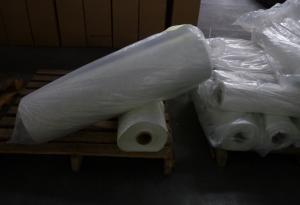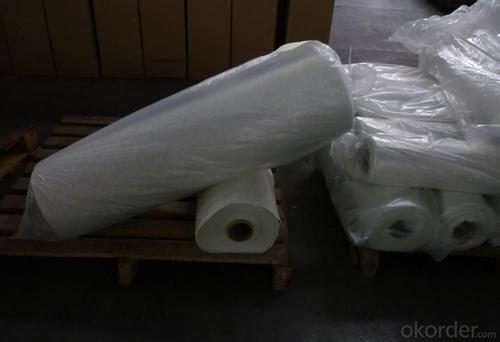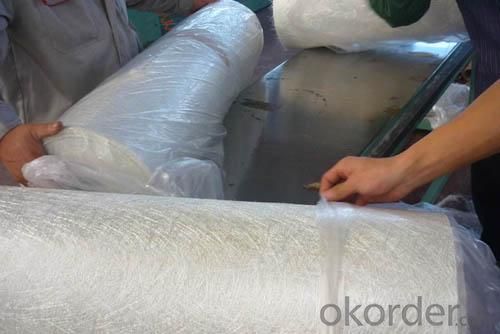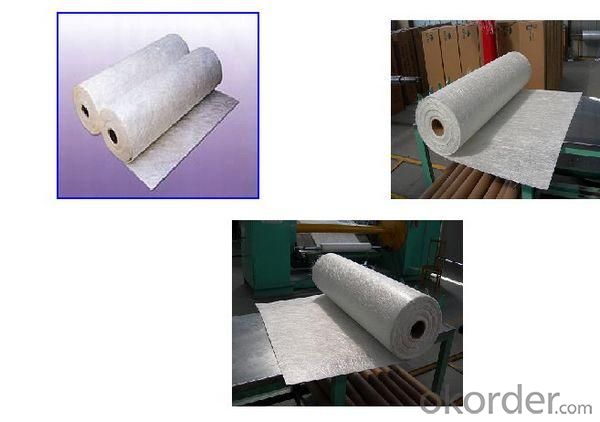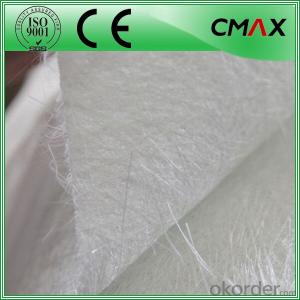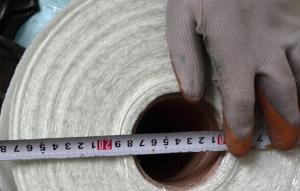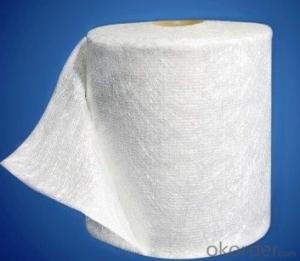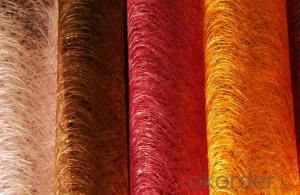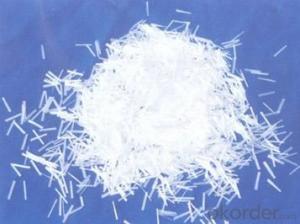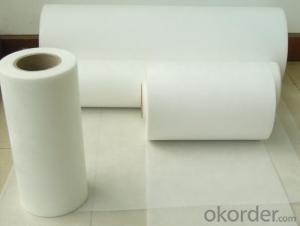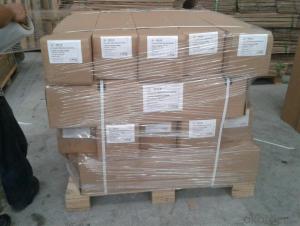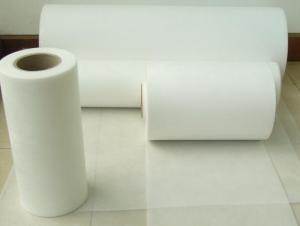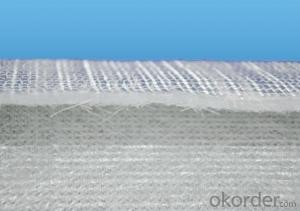Chopped Strand Mat Fiberglass Mat Tissue
- Loading Port:
- China Main Port
- Payment Terms:
- TT or LC
- Min Order Qty:
- 5Ton kg
- Supply Capability:
- 600TON PER MONTH kg/month
OKorder Service Pledge
OKorder Financial Service
You Might Also Like
Specifications of Chopped Strand Mat
chopped strands mat is powder or emulsion bonded by chopped E-glass or C-glass glass fiber.
Introduction of Chopped Strand Mat
Chopped stran mat is reinforced material vastly used in the moulding process of fiberglass by bands and in some mechanical forming technology as well.
Characteristics of Chopped Strand Mat
♦non-directional and even distribution, high mechanical kinetics
♦fine plating and fitting for complex shapes of moulders
♦soaked with resin, cutting freely, work simply
♦high strength of absorbing resin, smooth appearance
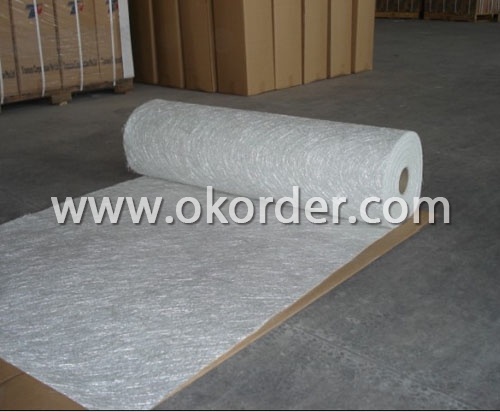
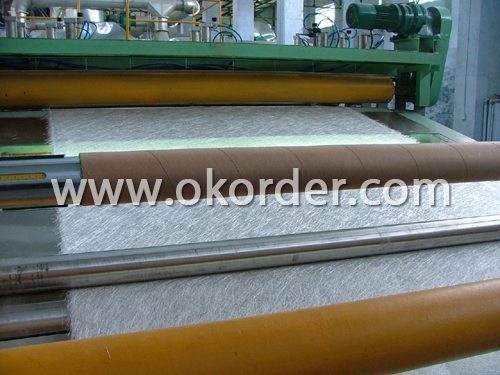
- Q: How is fiberglass mat tissue used in the production of windshields?
- Fiberglass mat tissue is used in the production of windshields as a reinforcement material. It is sandwiched between layers of glass to increase the strength and durability of the windshield. This tissue provides added resistance to impacts, helps prevent cracks from spreading, and improves overall structural integrity.
- Q: Can fiberglass mat tissue be used for reinforcing fiberglass boats?
- Yes, fiberglass mat tissue can be used for reinforcing fiberglass boats. It is often used in boat construction and repair to strengthen the hull and improve its durability. The mat tissue is typically applied with resin to create a strong and rigid composite structure.
- Q: What are the advantages of using fiberglass mat tissue?
- Fiberglass mat tissue offers several benefits when utilized in different applications. To begin with, its lightweight composition allows for easy handling and transportation, making it a practical option for the construction and manufacturing sectors. Moreover, fiberglass mat tissue boasts exceptional strength and durability. Its high tensile strength enables it to withstand heavy loads and resist tearing or breaking, making it an ideal choice for reinforcing structures and ensuring structural integrity. In addition, fiberglass mat tissue exhibits a high level of resistance to corrosion, chemicals, and weathering. It remains unaffected by rust, rot, or degradation when exposed to harsh environmental conditions, thereby making it perfectly suited for outdoor use. Furthermore, the versatility of fiberglass mat tissue is worth noting. It can be effortlessly molded into various shapes and sizes, rendering it suitable for a wide array of applications. Whether it is employed in the construction sector, automotive industry, or even for boat hulls, fiberglass mat tissue can be tailored to meet specific design requirements. Furthermore, fiberglass mat tissue serves as an excellent thermal insulator. It effectively traps heat, resulting in energy efficiency and cost-effectiveness when utilized for insulation purposes. This can contribute to reduced energy consumption and lower heating or cooling costs in buildings. Lastly, fiberglass mat tissue is highly fire-resistant. Its resistance to ignition and ability to withstand high temperatures without melting or releasing toxic fumes make it a safe option for applications where fire safety is a concern, such as in the construction of fire-resistant doors or insulation materials. In conclusion, the advantages of using fiberglass mat tissue include its lightweight nature, strength and durability, resistance to corrosion and weathering, design versatility, thermal insulation properties, and fire resistance. These attributes make it an exceedingly desirable material in various industries and applications.
- Q: Can fiberglass mat tissue be used for bridge construction?
- Yes, fiberglass mat tissue can be used for bridge construction. It is often used as a reinforcement material in the construction of bridges due to its high strength, durability, and resistance to corrosion. It helps to improve the overall structural integrity and longevity of the bridge.
- Q: Can fiberglass mat tissue be used for attic insulation?
- Typically, fiberglass mat tissue is not the primary insulation material used in attics. Its purpose is to complement other insulation materials, like fiberglass batts or blown-in insulation, in order to enhance their performance and provide some thermal resistance. Fiberglass mat tissue is frequently utilized as a facing material for insulation products, serving as a vapor barrier or a reinforcement layer. Although it can enhance the durability and moisture resistance of the insulation, its main function is not to offer significant thermal insulation on its own. When insulating an attic, it is more common to employ materials specifically designed for thermal insulation, such as fiberglass batts, cellulose, or spray foam insulation. These materials possess higher R-values and are more effective at minimizing heat transfer, which is essential for maintaining a comfortable indoor temperature and achieving energy efficiency. In conclusion, fiberglass mat tissue may possess insulation properties, but its primary purpose is to enhance the performance of other insulation materials rather than being used as the sole insulation in an attic.
- Q: Is fiberglass mat tissue suitable for oil and gas applications?
- Yes, fiberglass mat tissue is suitable for oil and gas applications. It is corrosion resistant, has high mechanical strength, and can withstand high temperatures, making it an ideal material for various oil and gas industry requirements such as insulation, reinforcement, and filtration. Additionally, fiberglass mat tissue has excellent chemical resistance, ensuring its durability and reliability in harsh environments commonly found in the oil and gas sector.
- Q: Is the Teflon gasket filled with fiberglass or graphite?
- PTFE generally used in static sealing, flange what, dynamic seal with FFKM, chemical resistance and PTFE, but with rubber elasticity
- Q: Can fiberglass mat tissue be recycled?
- Indeed, recycling is a viable option for fiberglass mat tissue. Fiberglass, composed of glass fibers and resin, allows for reusing both elements. To recycle, the glass fibers and resin are separated, typically via mechanical grinding or melting techniques. The isolated fibers are subsequently employed in the production of fresh fiberglass products like insulation, roofing materials, or even new fiberglass mat tissue. The recycling of fiberglass plays a critical role in lessening the environmental impact of this material by diverting it from landfills and conserving valuable resources. It's important to acknowledge, however, that the recycling process can be intricate and costly, which means not all recycling facilities may accept fiberglass mat tissue.
- Q: How does fiberglass mat tissue compare to cellulose insulation?
- Fiberglass mat tissue and cellulose insulation differ in terms of material composition and insulation properties. Fiberglass mat tissue is made from fine glass fibers, while cellulose insulation is composed of recycled paper fibers treated with fire-retardant chemicals. Fiberglass mat tissue offers higher R-value, meaning it provides better thermal insulation and energy efficiency. Additionally, it is resistant to moisture and does not promote mold growth. On the other hand, cellulose insulation is more affordable, environmentally friendly, and provides better sound insulation. Ultimately, the choice between the two depends on specific insulation needs, budget, and environmental considerations.
- Q: Can fiberglass mat tissue be used for making boat hulls?
- Yes, fiberglass mat tissue can be used for making boat hulls. It is commonly used in boat manufacturing due to its strength, durability, and ability to provide structural reinforcement.
1. Manufacturer Overview
| Location | Zhejiang, China |
| Year Established | 1969 |
| Annual Output Value | Above US$ 150 Million |
| Main Markets | overseas companies in Hongkong, Canada, South Africa, South Korea, India, Italy, Singapore, France and many other countries and regions. |
| Company Certifications | ISO9001;ISO14001 |
2. Manufacturer Certificates
| a) Certification Name | |
| Range | |
| Reference | |
| Validity Period |
3. Manufacturer Capability
| a) Trade Capacity | |
| Nearest Port | Shanghai |
| Export Percentage | 40%-50% |
| No.of Employees in Trade Department | 21-50 People |
| Language Spoken: | English |
| b) Factory Information | |
| Factory Size: | Above 5000,000 square meters |
| No. of Production Lines | Above 5 |
| Contract Manufacturing | |
| Product Price Range | Average |
Send your message to us
Chopped Strand Mat Fiberglass Mat Tissue
- Loading Port:
- China Main Port
- Payment Terms:
- TT or LC
- Min Order Qty:
- 5Ton kg
- Supply Capability:
- 600TON PER MONTH kg/month
OKorder Service Pledge
OKorder Financial Service
Similar products
Hot products
Hot Searches
Related keywords
